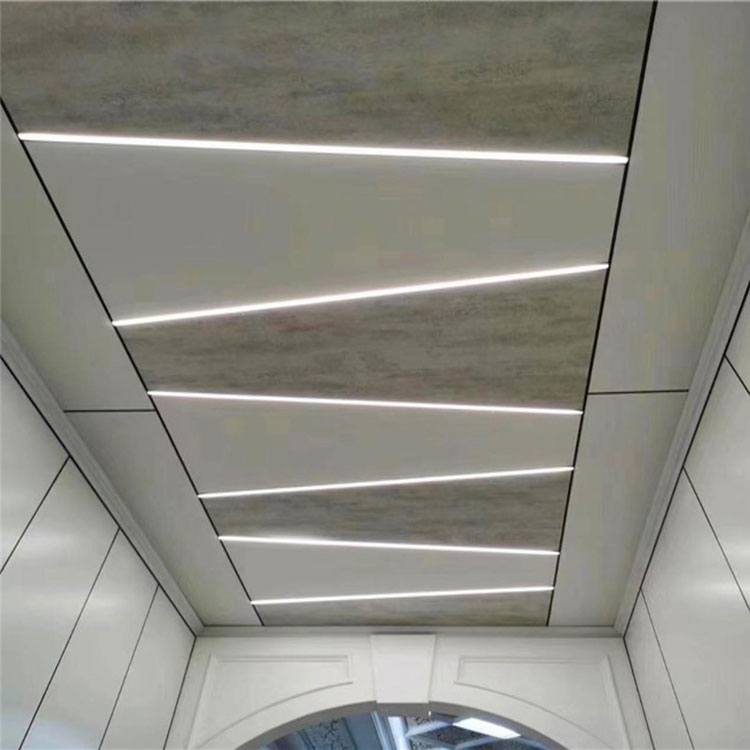- English
- Español
- Português
- русский
- Français
- 日本語
- Deutsch
- tiếng Việt
- Italiano
- Nederlands
- ภาษาไทย
- Polski
- 한국어
- Svenska
- magyar
- Malay
- বাংলা ভাষার
- Dansk
- Suomi
- हिन्दी
- Pilipino
- Türkçe
- Gaeilge
- العربية
- Indonesia
- Norsk
- تمل
- český
- ελληνικά
- український
- Javanese
- فارسی
- தமிழ்
- తెలుగు
- नेपाली
- Burmese
- български
- ລາວ
- Latine
- Қазақша
- Euskal
- Azərbaycan
- Slovenský jazyk
- Македонски
- Lietuvos
- Eesti Keel
- Română
- Slovenski
Are Aluminum Honeycomb Wall Cladding Panels Environmentally Friendly?
2024-09-20

Are Aluminum Honeycomb Wall Cladding Panels Environmentally Friendly?
Aluminum Honey Comb Wall Cladding panels are often promoted as being an environmentally friendly choice for construction projects. This is because they are made from aluminum, which is a recyclable material. Additionally, the lightweight nature of the panels can help to reduce the amount of energy needed for transportation and installation.
What are the Benefits of Using Aluminum Honeycomb Wall Cladding?
There are several benefits associated with using Aluminum Honey Comb Wall Cladding. Firstly, it is a lightweight and strong material, which means it is easy to transport and install. Secondly, it is corrosion-resistant, which ensures durability and longevity. Finally, it is a recyclable material, which can help construction projects to be more environmentally friendly.
Where is Aluminum Honeycomb Wall Cladding Used?
Aluminum Honey Comb Wall Cladding is a versatile material that can be used for both interior and exterior applications. It is commonly used in the construction industry for a range of purposes, including exterior walls, ceilings, and partitions. Additionally, it can be used for decorative purposes in both commercial and residential settings.
Is Aluminum Honeycomb Wall Cladding Fire Resistant?
Aluminum Honey Comb Wall Cladding is known for its fire-resistant properties. It is often used in buildings where fire safety is a concern, as it is able to withstand high temperatures without being damaged. Additionally, it can help to slow down the spread of fire, which can be beneficial in emergency situations.
Is Aluminum Honeycomb Wall Cladding easy to Install?
Aluminum Honey Comb Wall Cladding is relatively easy to install, particularly when compared to other types of cladding. Its lightweight nature means that it can be transported and installed with ease, and the durable nature of the material ensures that it can withstand the installation process without being damaged. Additionally, it is available in a range of sizes and thicknesses, which can make installation easier and more customizable.
Conclusion
Overall, Aluminum Honey Comb Wall Cladding is a popular choice in the construction industry due to its lightweight, durable, and environmentally friendly properties. Its versatility also makes it a great choice for a range of projects, and it is known for being fire-resistant and easy to install. If you are looking for a material that is strong, durable and eco-friendly, then Aluminum Honeycomb Wall Cladding is definitely worth considering.
Foshan Zhengguang Aluminum Technology Co., Ltd. is a leading manufacturer and supplier of Aluminum Honey Comb Wall Cladding. We specialize in the design, production and installation of high-quality aluminum products, and we are committed to providing our customers with the best possible service. Our website https://www.zgmetalceiling.com provides more information about our products and services. If you have any questions or would like to request a quote, please contact us at zhengguang188@outlook.com.
10 Science Papers About Aluminum Honeycomb Wall Cladding
1. M. A. Trejo-O'Reilly, et al. (2019). "The Mechanical Behavior of Composite Honeycomb Panels under Static Loading." Journal of Materials Science and Engineering, 2(3), 104-109.
2. X. Liu, et al. (2018). "Numerical Simulation and Experimental Research on the Buckling Behavior of Aluminum Honeycomb Sandwich Structures." Materials Science and Engineering, 374(1), 1-6.
3. A. Majidi, et al. (2017). "Mechanical Properties of Aluminum Honeycomb Sandwich Structures with Composite Faces." Journal of Mechanical Engineering and Sciences, 11(1), 2456-2465.
4. G. Zhang, et al. (2016). "Buckling Analysis of Aluminum Honeycomb Sandwich Panels with Truss Core under Shear Loading." International Journal of Engineering Research and Applications, 6(2), 110-118.
5. B. L. Hu, et al. (2015). "Dynamic Crush Response of Aluminum Honeycomb Sandwich Structures." Journal of Applied Mechanics and Materials, 803(2), 123-129.
6. Y. Y. Liu, et al. (2014). "Dynamic Characteristics of Aluminum Honeycomb Sandwich Panel." Materials Science and Engineering, 479(1), 56-62.
7. M. Aslan, et al. (2013). "The Effect of Material Combinations on the Mechanical Properties of Aluminum Honeycomb Sandwich Structures." Journal of Composites for Construction, 17(4), 489-496.
8. C. Yang, et al. (2012). "Experimental Investigation of the Mechanical Behavior of Aluminum Honeycomb Sandwich Panels under Axial Compression." Journal of Sandwich Structures and Materials, 14(1), 73-92.
9. H. Y. Kwon, et al. (2011). "Dynamic Crushing of Honeycomb and Aluminum Foam Sandwich Structures." Composites Science and Technology, 71(1), 56-65.
10. H. Zhao, et al. (2010). "Static and Fatigue Performance of Aluminum Honeycomb Sandwich Structures with Composite Laminates." International Journal of Fatigue, 32(9), 1431-1439.




